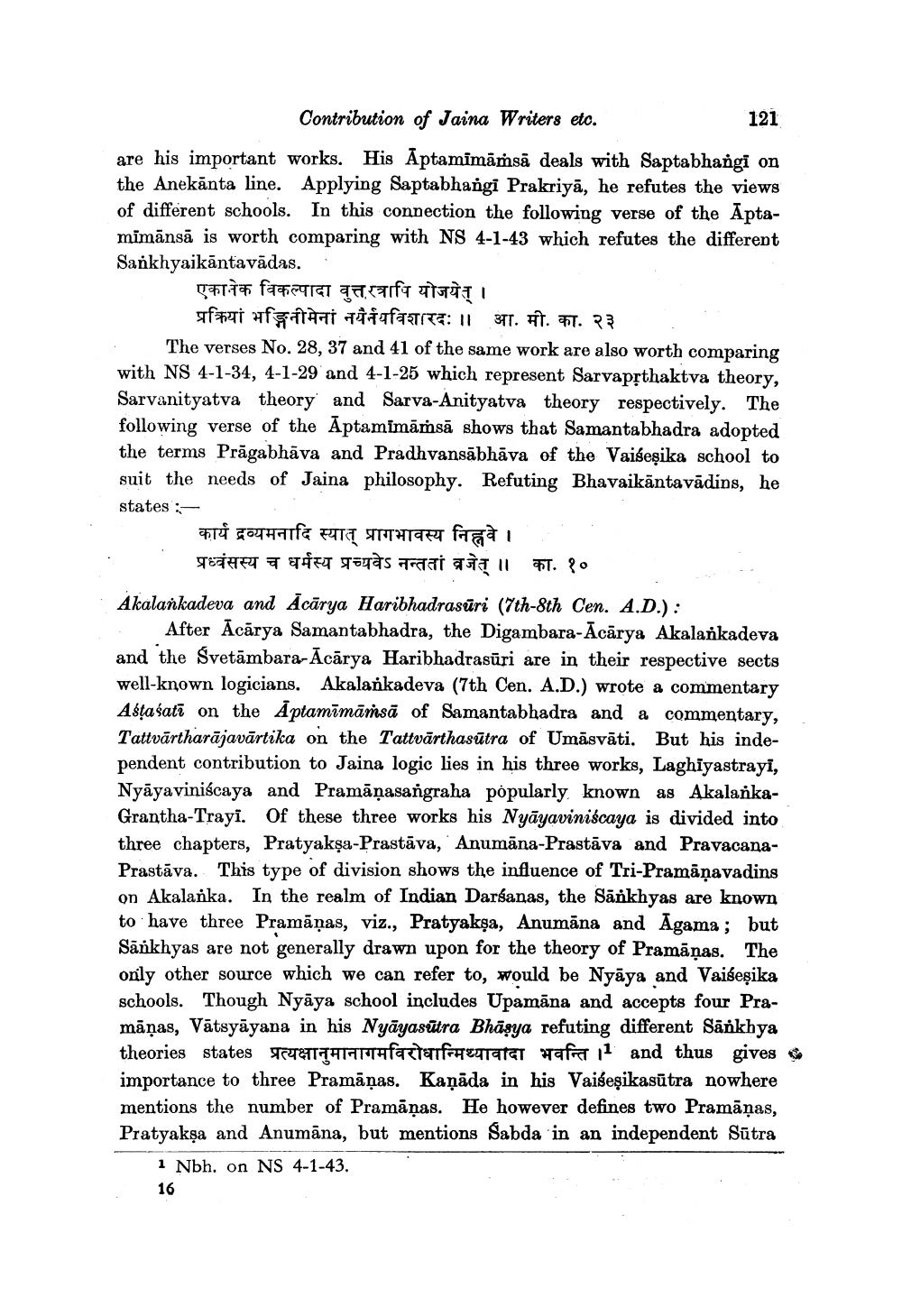________________
Contribution of Jaina Writers etc.
121
are his important works. His Aptamimāṁsā deals with Saptabhangi on the Anekānta line. Applying Saptabhangi Prakriyā, he refutes the views of different schools. In this connection the following verse of the Aptamimānsă is worth comparing with NS 4-1-43 which refutes the different Sankhyaikāntavādas.
एकानेक विकल्पादा वुत्तरत्रापि योजयेत् ।
प्रक्रियां भङ्गिनीमेनां नयनयविशारदः ॥ आ. मी. का. २३
The verses No. 28, 37 and 41 of the same work are also worth comparing with NS 4-1-34, 4-1-29 and 4-1-25 which represent Sarvaprthaktva theory, Sarvanityatva theory and Sarva-Anityatva theory respectively. The following verse of the Aptamimāṁsā shows that Samantabhadra adopted the terms Prāgabhāva and Pradhvansābhāva of the Vaišeşika school to suit the needs of Jaina philosophy. Refuting Bhavaikäntavādins, he states ___ कार्य द्रव्यमनादि स्यात् प्रागभावस्य निह्नवे।
प्रध्वंसस्य च धर्मस्य प्रच्यवेऽ नन्ततां व्रजेत् ॥ का. १० Akalankadeva and Ācārya Haribhadrasūri (7th-8th Cen. A.D.):
After Acārya Samantabhadra, the Digambara-Acārya Akalankadeva and the Svetāmbara-Acārya Haribhadrasūri are in their respective sects well-known logicians. Akalankadeva (7th Cen. A.D.) wrote a commentary Aštasata on the Aptamīmārsā of Samantabhadra and a commentary, Tattvārtharājavārtika on the Tattvārthasūtra of Umāsvāti. But his independent contribution to Jaina logic lies in his three works, Laghiyastrayi, Nyāyaviniscaya and Pramāṇasangraha popularly known as AkalankaGrantha-Trayi. Of these three works his Nyāyaviniscaya is divided into three chapters, Pratyakşa-Prastāva, Anumāna-Prastāva and PravacanaPrastāva. This type of division shows the influence of Tri-Pramāṇavadins on Akalanka. In the realm of Indian Darśanas, the Sankhyas are known to have three Pramāņas, viz., Pratyakşa, Anumāna and Agama; but Sankhyas are not generally drawn upon for the theory of Pramāṇas. The only other source which we can refer to, would be Nyāya and Vaišeşika schools. Though Nyāya school includes Upamāna and accepts four Pramāņas, Vātsyāyana in his Nyāyasūtra Bhāsya refuting different Sänkhya theories states TEUTETTATANT factare att vara 11 and thus gives importance to three Pramāņas. Kaņāda in his Vaišeşikasūtra nowhere mentions the number of Pramāṇas. He however defines two Pramāņas, Pratyakşa and Anumāna, but mentions Sabda in an independent Sūtra
1 Nbh. on NS 4-1-43. 16




